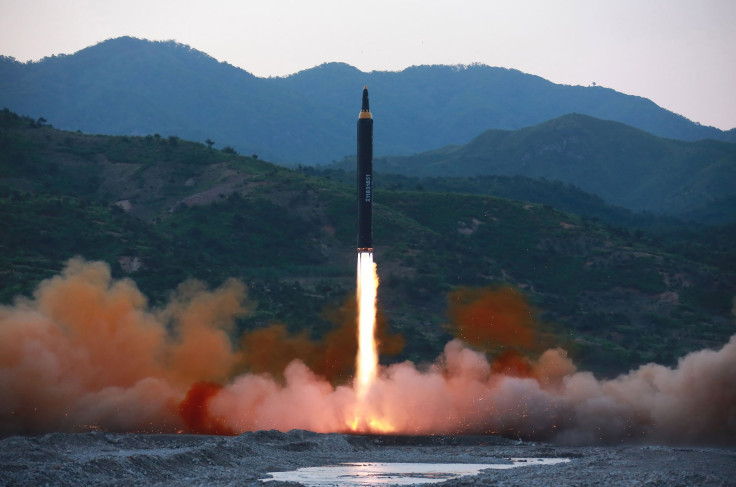North Korea Mistakenly Bombed Own City During Failed Missile Test: Report

North Korean leader Kim Jong Un loves to repeatedly display his country’s nuclear reach by conducting frequent ballistic missile tests, even if his own citizens become collateral damage of those experiments.
According to a recent report by Diplomat, a Hwasong-12 intermediate-range ballistic missile, tested by North Korea in April 28, 2017, failed halfway through its test flight and ended up crashing into Tokchon, a city few miles away from Pyongyang.
The missile was launched from North Korea's Pukchang airfield. It flew 24 miles into the air in the northeastern direction before striking a complex of industrial or agricultural facilities in Tokchon.
Evidence that the missile crash-landed in the complex, which was located near residential and commercial buildings, was verified via satellite images of the missile test.
Although the images show that the explosion caused considerable damage in the heavily populated area, there is no way to tell if the crash led to casualties. Had the missile successfully completed the test, it would have landed in the northern part of the Sea of Japan, near the Russian coast.
The failed Hwasong-12 missile test was reported widely at the time by various media outlets around the world, but details of where it ended up remained a mystery until now.
The particular experiment was the third attempt by North Korea to perfect its Hwasong-12 missile. Fearing the chances of such a mishap, Kim had chosen the seaside town of Sinpo as the test site for the first two failed Hwasong-12 launches in April.
This certainly limited the chances of incurring any infrastructural damage or human loss as the missile would have landed in sea in case of failure. However, according to reports, North Korea discarded Sinpo as a ballistic testing site after April for some reason.
The country presently uses a range of new testing sites, including Pyongyang’s Sunan Airport, which also serves as North Korea’s main civil aviation facility and the entry point for most non-Chinese foreign visitors. This means the chances of such accidents happening in Pyongyang or its surrounding inhabitable areas remain high.
Despite multiple testing failures, Hwasong-12 missile was successfully test launched on May 14. It is believed that the success of the missile paved way for Hwasong-14/KN20 intercontinental-range ballistic missile (ICBM), unveiled by North Korea last year.
North Korea’s incessant missile testing throughout 2017 escalated tension with the U.S.; and by the looks of it, 2018 is not going to be any better.
In his News Year’s speech televised nationally, Kim stated: “The United States can never fight a war against me and our state. It should properly know that the whole territory of the U.S. is within the range of our nuclear strike and a nuclear button is always on the desk of my office, and this is just a reality, not a threat.”
Not to be left behind in this game of one-upmanship, President Donald Trump tweeted:
However, the cold relationship between South Korea and the North showed signs of thawing in the beginning of 2018.
It was reported Wednesday that Kim had opened a border hotline to his South Korean counterpart Moon Jae-in, restoring a direct channel of dialogue, which had been non-existent since the latter got elected last year.
Moon has also seized the opportunity of mending fences with North Korea. He insisted that high-level negotiators from both Koreas meet at Panmunjom, situated at the border, next Tuesday to discuss the North’s Olympic participation.
“We will connect with the South with a sincere and diligent attitude,” Ri Son Kwon, a senior North Korean official, said Wednesday. “We once again express our sincere hope that the Pyeongchang Olympics will be successful.”
In keeping with his habit, Trump claimed credit for improving relations between Pyongyang and Seoul. Following reports of reestablishment of open dialogue between the two Koreas, the president posted the following tweet on Wednesday:
© Copyright IBTimes 2024. All rights reserved.












